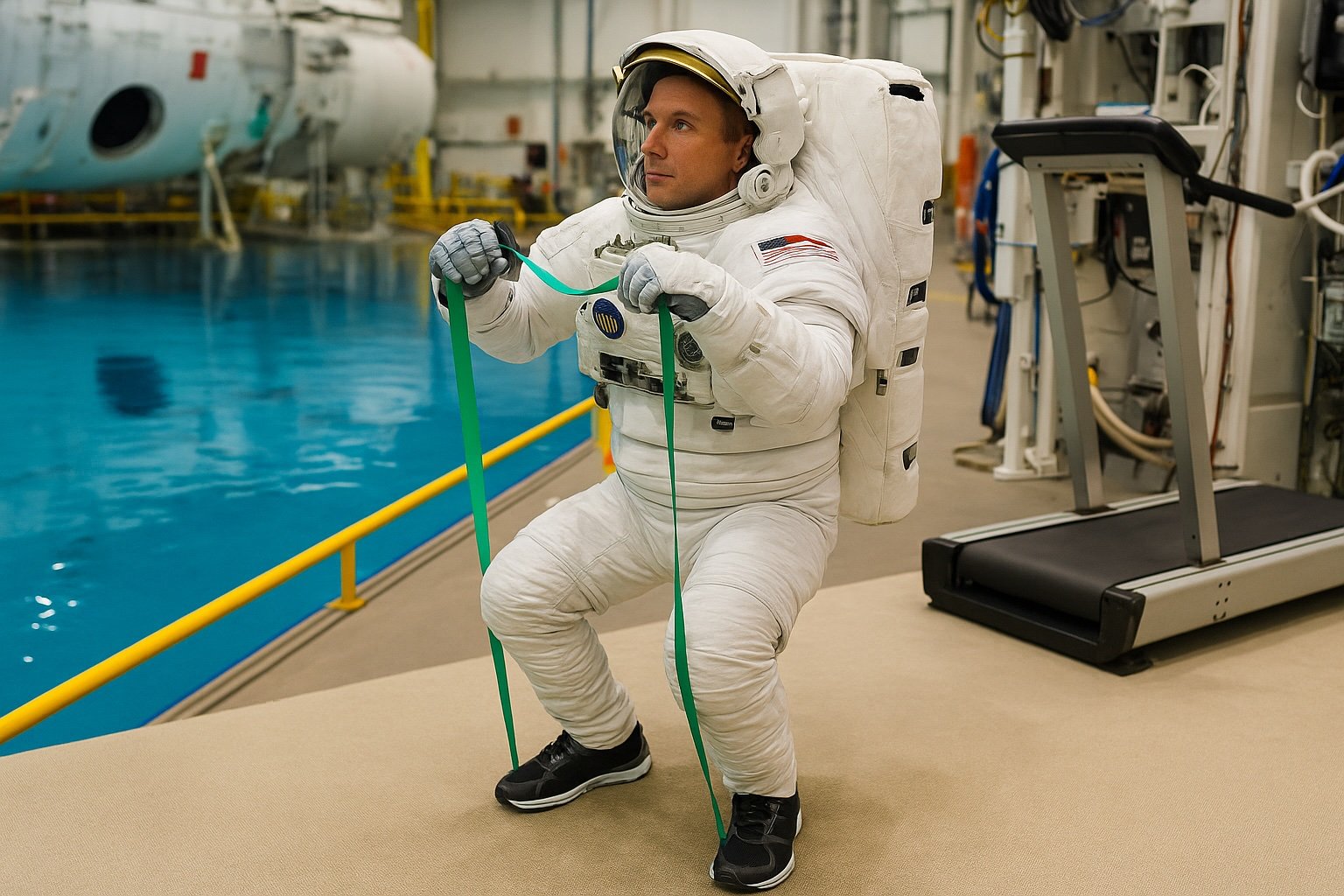Why Astronauts Need a Special Workout
In space, gravity disappears. That might sound fun, but it’s tough on the human body. Without gravity, astronauts lose muscle mass and bone density at alarming rates. Walking or swimming—our go-to exercises on Earth—don’t work in space. NASA needed a smarter solution.
This led to years of testing unusual workouts, some of which are now being used right here on Earth.
The Exercise NASA Chose
So, what beats walking and swimming in space? The answer: resistance training with elastic bands and machines that simulate weightlifting without gravity.
Astronauts use a device called the Advanced Resistive Exercise Device (ARED). Instead of weights, it uses vacuum cylinders and elastic resistance to mimic the pressure of lifting dumbbells or doing squats.
-
Squats – to protect leg muscles and hips
-
Deadlifts – to strengthen the spine and core
-
Bench press – to maintain upper-body strength
-
Rowing motions – to improve cardiovascular endurance
This system gives astronauts a full-body workout without relying on gravity.
Why NASA Didn’t Choose Swimming or Walking
On Earth, swimming and walking are excellent workouts. They boost heart health, burn calories, and protect joints. But in space, they don’t work the same way.
-
Walking: Impossible in zero gravity, since feet don’t touch the ground.
-
Swimming: Useless in a space capsule—there’s no pool, and water doesn’t behave the same way in microgravity.
NASA needed something that replicated muscle resistance without relying on gravity or water. That’s why resistance training won.
What Makes This Workout So Effective
This training isn’t just about keeping astronauts in shape for space missions. NASA found that these resistance-based exercises bring massive benefits for everyone:
-
Prevents muscle loss – similar to protecting against aging-related muscle decline
-
Strengthens bones – resistance helps prevent osteoporosis
-
Boosts metabolism – builds lean muscle that burns calories all day
-
Protects joints – unlike high-impact running, it’s gentle but powerful
In fact, doctors now recommend similar band-based workouts for seniors, athletes, and anyone looking for low-impact strength training.
Can You Try NASA’s Workout at Home?
Yes—and you don’t need a million-dollar machine to do it. Elastic resistance bands, widely available online, mimic the same principles astronauts use.
Here’s a simple NASA-inspired routine you can try:
-
Band Squats – Stand on a band, pull up while squatting (10–12 reps)
-
Seated Rows – Attach a band to a stable point, pull toward your chest (12–15 reps)
-
Overhead Press – Step on a band, push overhead (8–10 reps)
-
Deadlifts – Use a band under your feet, hinge at the hips, pull up slowly (10–12 reps)
-
Push-ups with Bands – Wrap around your back for extra resistance (8–10 reps)
Repeat 2–3 rounds for a complete space-tested workout.
The Future of Space Fitness
NASA continues to test new exercise methods as missions get longer. With future trips to Mars expected to last years, keeping astronauts strong and healthy is critical. Resistance training will remain a core part of astronaut survival—and it may soon inspire new fitness tools for Earth too.
Key Takeaway
Neither swimming nor walking could keep astronauts fit in zero gravity. NASA discovered that resistance training is the ultimate solution. The best part? You don’t need to go to space to benefit. With a few bands and 20 minutes a day, you can train like an astronaut—building muscle, protecting your bones, and boosting longevity.
